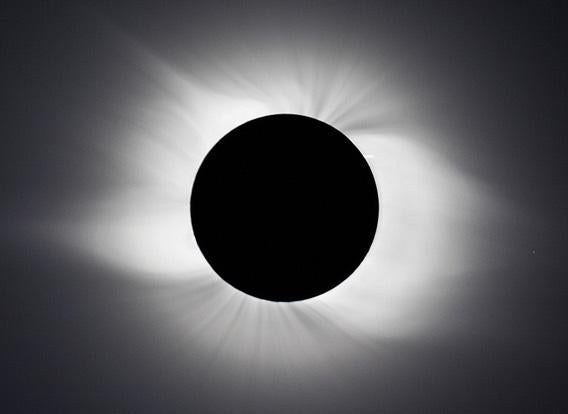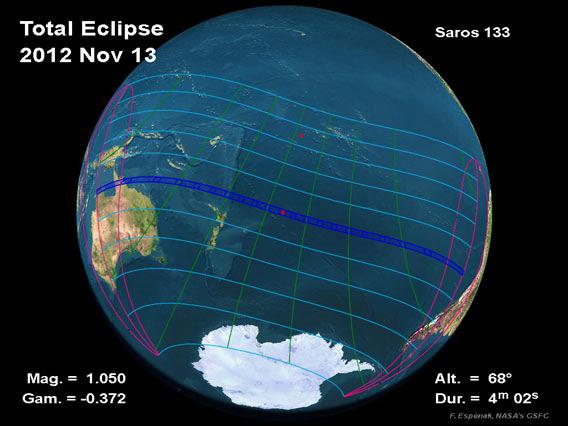In just a few hours, planet Earth will have a front-row seat to one of the most delightful of celestial events: a total solar eclipse. It’s happening over northern Australia and the southern Pacific Ocean, but don’t fret: There are plenty of places you can watch it live online! It starts at 20:35 UTC (3:35 p.m. Eastern US time).
First, what’s a solar eclipse?

Image credit: Anthony Ayiomamitis
Cosmic Coincidence
We here on Earth are fortunate to be on the receiving end of a pretty big coincidence: The Moon and Sun appear to be the same size in the sky. It really is a coincidence. As it happens, the Sun is about 400 times the diameter of the Moon (1.4 million kilometers versus 3470 — or 864,000 miles versus 2100 depending on which units you like) but is also about 400 times farther away (150 million km to the Sun versus 380,000 to the Moon). These two numbers very closely cancel each other out, leaving the Sun and Moon nearly equal in apparent size.
Not only that, but the Moon’s monthly orbital path sometimes brings it directly between us and the Sun. When that happens, the Moon blocks the disk of the Sun, eclipsing it. It doesn’t happen every month because the Moon’s orbit is slightly tilted with respect to the Earth and Sun, so things have to line up just right. It generally happens about once a year or so somewhere on Earth.
In the case of today’s eclipse, Australia has the best seat in the house. But, thanks to the Internet, so do you.
Time and Space
Another way to think of an eclipse is that the Moon is casting its shadow on the Earth’s surface. The path of that shadow is the path of the eclipse, which you can see here:

Image Credit: Fred Espenak/NASA
The dark blue line crossing Australia into the Pacific is the line of totality; the place where you see the entire disk of the Sun blocked. It starts on the left (west) side and sweeps eastward, to the right. The shadow will take about 3 hours to move across the Earth, but for any one location the eclipse lasts only a few minutes as the Moon’s shadow passes over. The biggest population center in the path is Cairns, Australia.
Today’s eclipse is mostly over the ocean, so very few people will be able to see it in person. But there’s that whole Internet thing, and lots of sites are broadcasting the event live!
You can find lists of live webcasts at UniverseToday.com. Some of the better views will be at the Cairns Eclipse 2012 UStream channel, the Gloria Project, and — seriously — at a Cairns hot air balloon website. I have to add that weather is critical here; if it’s cloudy then there won’t be much of a view. But you should tune in just in case.
If you happen to be in Cairns you can see the eclipse with your own eyes. But please, please, please, take precautions! The Sun is not to be trifled with, and can damage your eyes. See the UniverseToday article for more on how to observe the eclipse safely.
And you should take advantage of this opportunity while you can: The next total eclipse won’t happen for nearly a year. That one will be on November 3, 2013, over the Atlantic Ocean and equatorial Africa. Plan your vacation now!